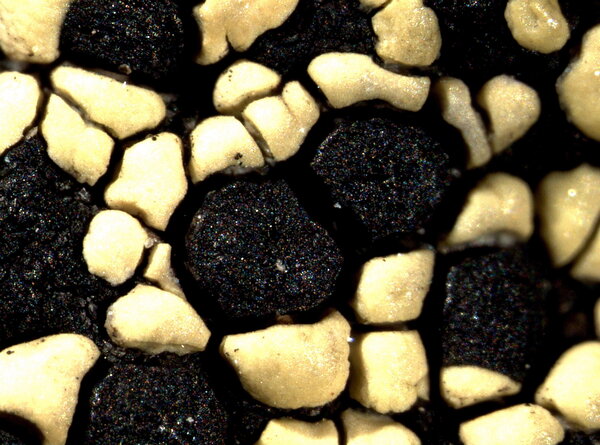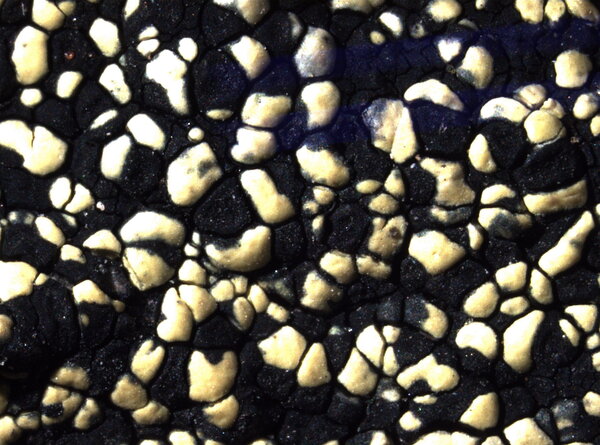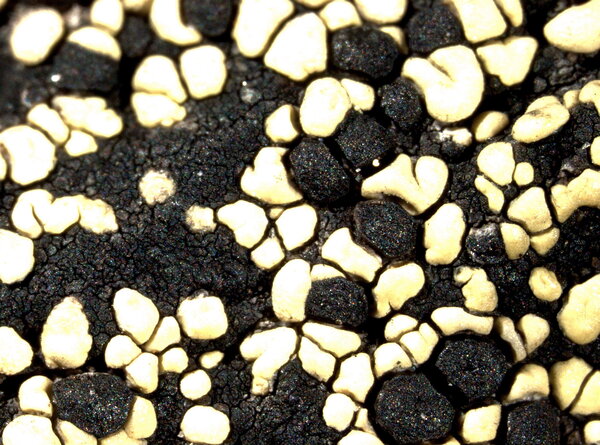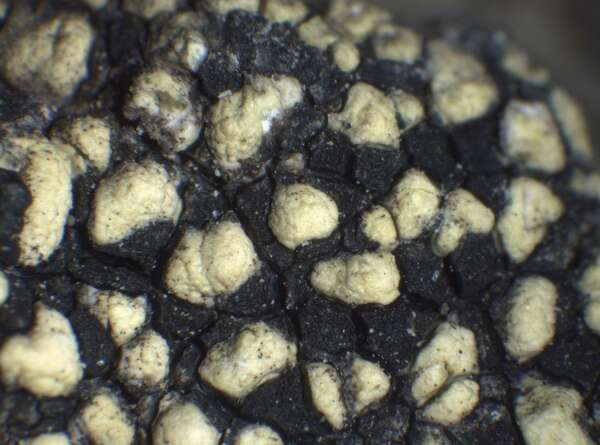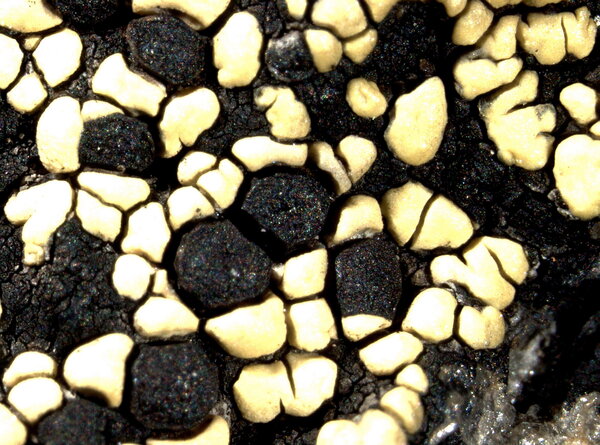Rhizocarpon carpaticum Runemark
Opera Bot., 2: 133, 1956.
Synonyms:
Distribution: N - Frl (Tretiach & Hafellner 2000), Ven, TAA (Nascimbene & al. 2022), Piem (Morisi & Sereno 1995, Morisi 2005). C - Tosc (Tretiach & al. 2008)
Description: Thallus crustose, episubstratic, rimose-areolate, pale yellow-green to whitish yellow, forming 1-6 cm wide patches delimited by a dark prothallus, the areoles contiguous or scattered on a black hypothallus, 0.2-0.8 mm wide, round to slightly angular, flat to usually slightly convex, smooth or rugose due to shallow cracks in the cortex. Cortex without a distinct structure, c. 40 µm thick; medulla white, I+ deep blue. Apothecia frequent, lecideine, arising between the areoles, round, 0.3-0.7 mm across, with a black, strongly convex, often undulate-verrucose, epruinose disc and a soon excluded proper margin. Proper exciple brownish red, K+ intensifying red; epithecium reddish brown, K- or K+ purple-red; hymenium colourless, 70-90 µm high; paraphysoids strongly coherent, richly branched and anastomosing, the apical cells clavate; hypothecium brown, 100-200 µm high, K-. Asci 8-spored, clavate, fissitunicate, with a well-developed tholus that is K/I- in lower part and K/I+ blue near the apex, lacking an ocular chamber, Rhizocarpon-type. Ascospores 1-3-septate, rarely submuriform and with a single transverse septum, soon becoming dark green to brown, ellipsoid, 11-20(-23) x 6-12(-14) µm, halonate at least when young. Photobiont chlorococcoid. Spot tests: medulla K-, C-, KC-, P- or P+ yellow. Chemistry: cortex with rhizocarpic acid; medulla with variable amounts of psoromic acid, and sometimes traces of gyrophoric acid.Note: on siliceous rocks under overhangs (surfaces protected from rain) in cold sites with frequent fog, with optimum near or above treeline.
Growth form: Crustose
Substrata: rocks
Photobiont: green algae other than Trentepohlia
Reproductive strategy: mainly sexual
In underhangs rarely wetted by rain
Commonnes-rarity: (info)
Alpine belt: very rare
Subalpine belt: rare
Oromediterranean belt: absent
Montane belt: extremely rare
Submediterranean belt: absent
Padanian area: absent
Humid submediterranean belt: absent
Humid mediterranean belt: absent
Dry mediterranean belt: absent

Predictive model
Herbarium samples
Growth form: Crustose
Substrata: rocks
Photobiont: green algae other than Trentepohlia
Reproductive strategy: mainly sexual
In underhangs rarely wetted by rain
Commonnes-rarity: (info)
Alpine belt: very rare
Subalpine belt: rare
Oromediterranean belt: absent
Montane belt: extremely rare
Submediterranean belt: absent
Padanian area: absent
Humid submediterranean belt: absent
Humid mediterranean belt: absent
Dry mediterranean belt: absent

Predictive model
| Herbarium samples |
 INDEX FUNGORUM
INDEX FUNGORUM
 GBIF
GBIF
 DOLICHENS
DOLICHENS
